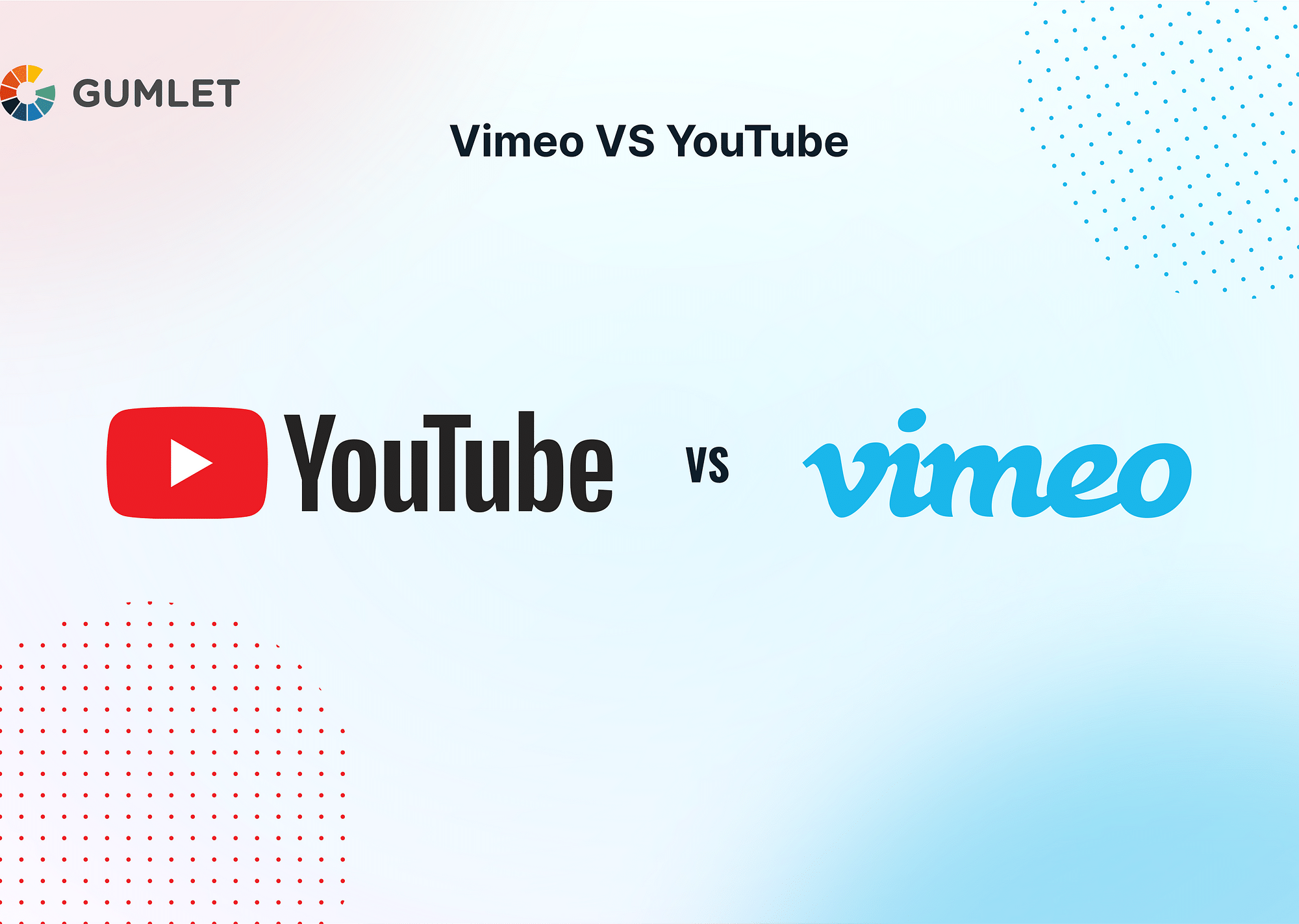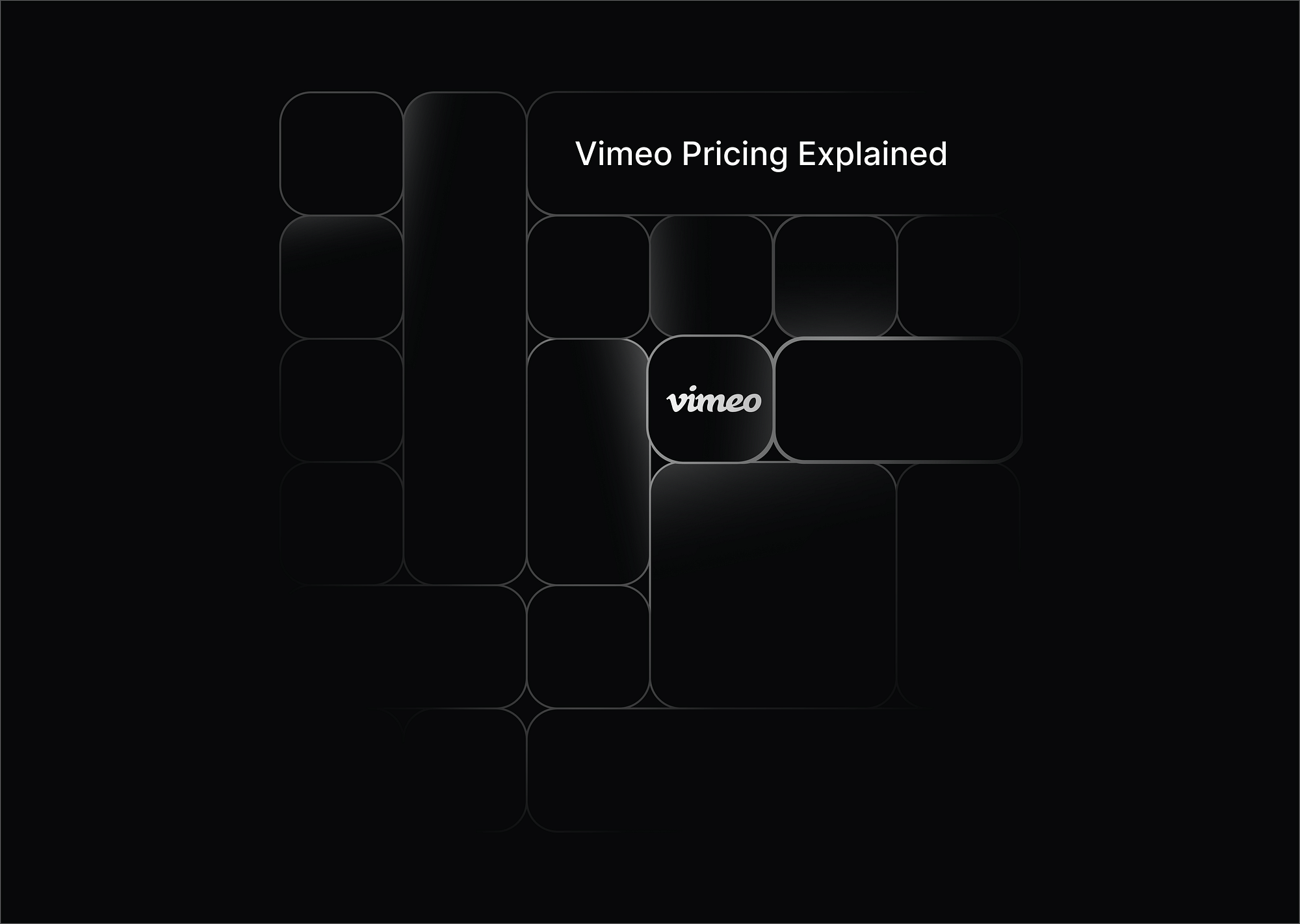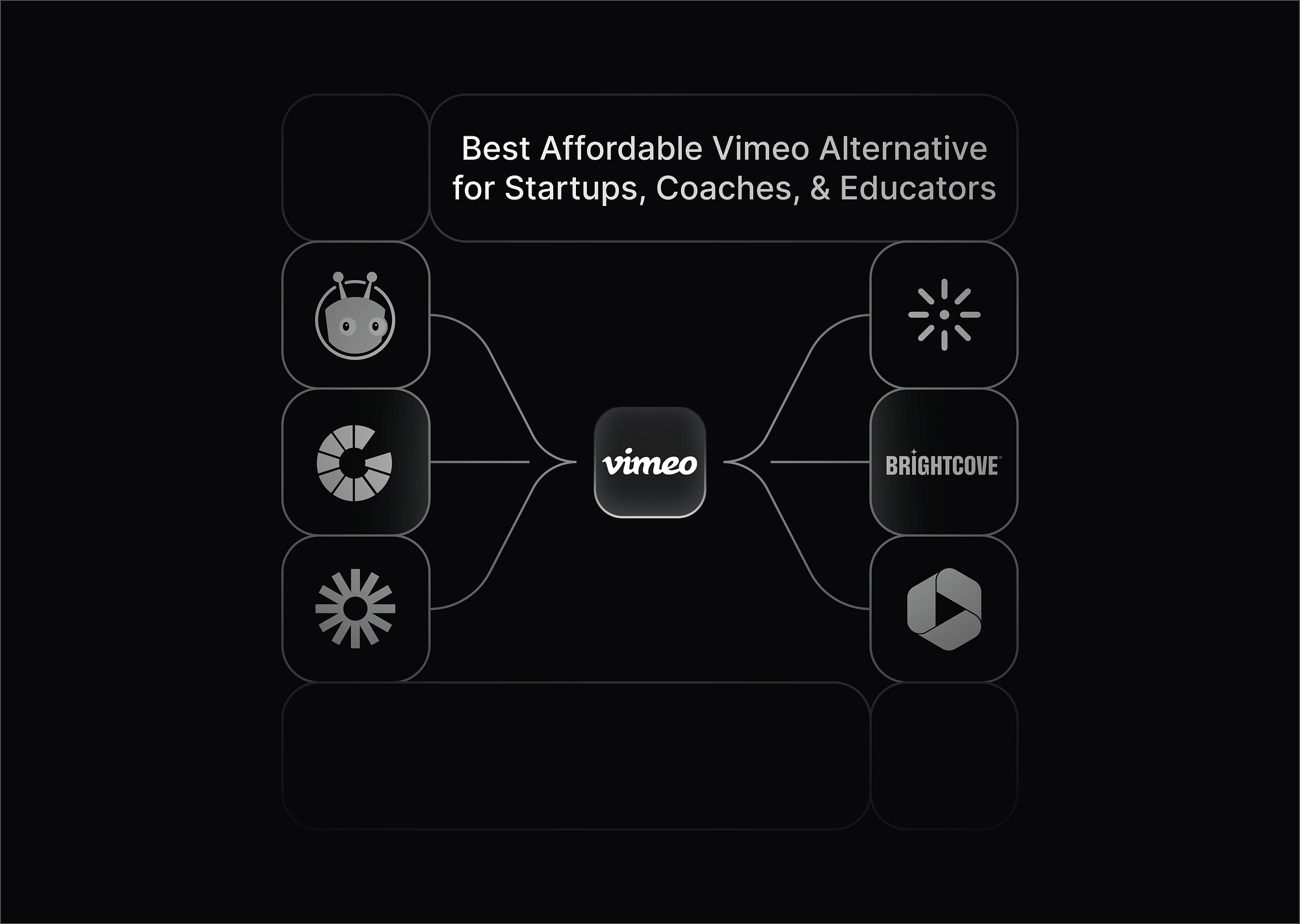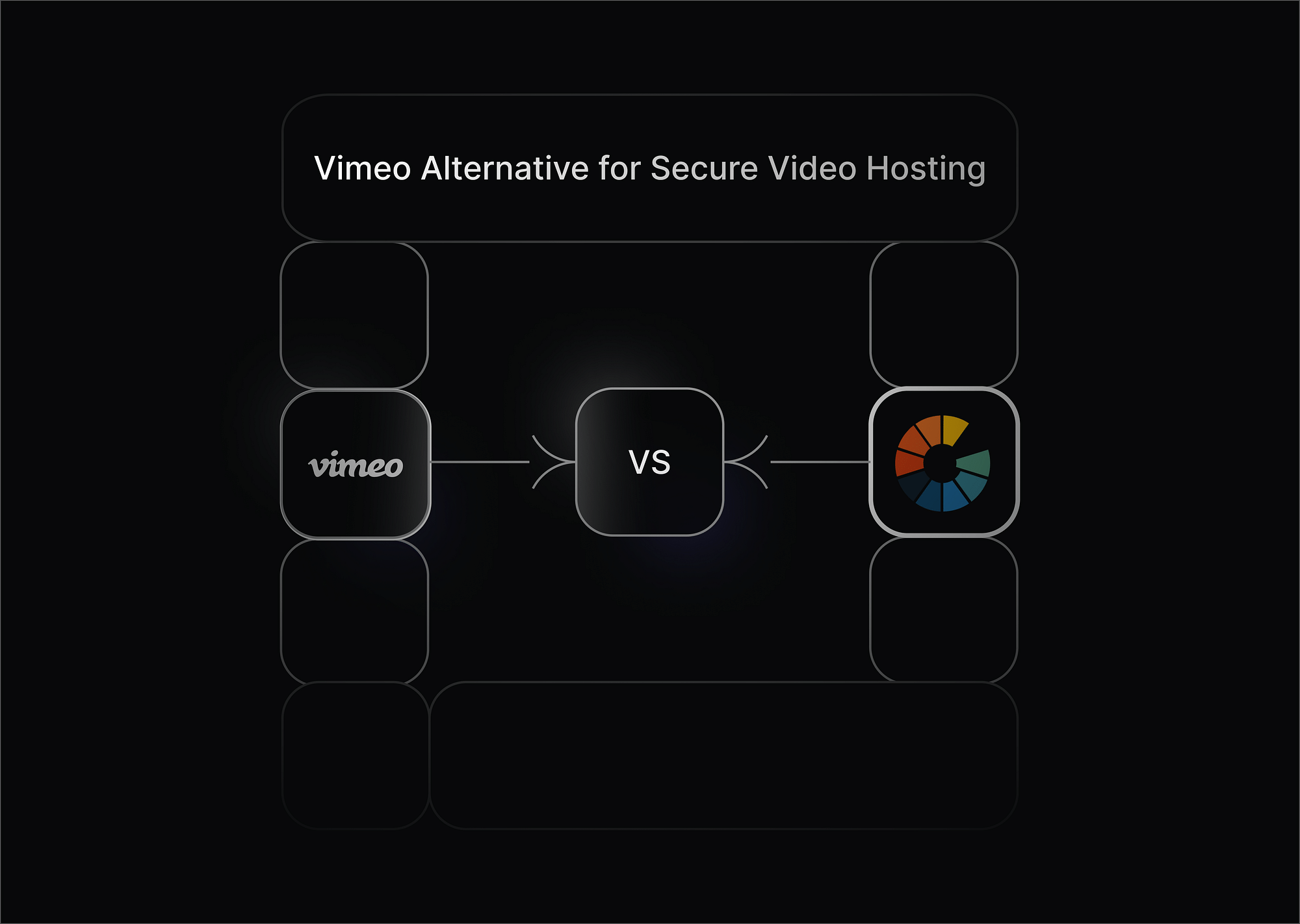Vimeo and YouTube are two of the most formidable players in this sphere, each carving out its distinct niche. While YouTube is often seen as the go-to for a wide range of content and a massive audience, Vimeo holds its ground with its focus on high-quality, professional videos. This divergence has left many content creators, businesses, and casual users in a quandary: which platform is ideal for their specific needs?
In this blog, we delve deep into the intricacies of both platforms, comparing their features, reach, monetization opportunities, and much more.
Schedule a Demo with Our Video Expert!
Discover how Gumlet can help you build a cutting-edge video streaming infrastructure.
Why is choosing the right video platform essential?
As a content creator or business, the platform you select to showcase videos is pivotal in determining reach, engagement, and success. Making an informed choice is more than just about storage or quality; it's about understanding your goals, audience, and each platform's unique features. Now, let's delve into the specific reasons why this choice is so crucial:
- Reaching the Target Audience: Different platforms cater to different demographics. Choosing the right one ensures that you reach your intended audience effectively.
- Content Protection: Platforms have varying copyright and content protection policies, affecting content creators significantly.
- Monetization Opportunities: Your earning potential varies based on platform policies and user bases.
- Branding and Customization: Some platforms offer more branding customization options than others, impacting brand visibility.
- User Experience: The platform's interface can shape the user's experience, influencing their interaction duration and engagement.
- Operational Costs: Different platforms come with varied costs, influencing the budget of content creators and businesses.
If you are looking for a comprehensive and powerful video hosting platform, then check out Gumlet, an all-in-one video platform. Gumlet is the right video platform for all kinds of creators/businesses because it offers high-quality video streaming, adaptive streaming, a global CDN, scalability, and security. It also offers several other features that make it a valuable tool for businesses, such as video analytics, branded video player, etc.
Sign up for a free trial of Gumlet today and see how easy it is to deliver high-quality video experiences to your audience.
Vimeo vs. YouTube: Difference between Vimeo and YouTube
Online video platforms have witnessed dynamic evolution, with Vimeo and YouTube standing out as one of the dominant pillars in this landscape. Let’s dissect the comparisons between these two platforms.
| Feature | Vimeo | YouTube |
|---|---|---|
| Video quality | Supports up to 8K video streaming, with higher bitrates than YouTube. | Supports up to 8K video streaming, but with lower bitrates than Vimeo. |
| Audio quality | Supports high-quality audio formats, such as FLAC and Apple Lossless. | Supports high-quality audio formats, such as FLAC and Opus. |
| Privacy | Offers more privacy options than YouTube, such as the ability to make videos private or password-protected. | Offers fewer privacy options than Vimeo, with videos being public by default. |
| Monetization | Offers a variety of monetization options, such as subscription plans, tip jars, and paid video downloads. | Offers a variety of monetization options, such as ads, channel memberships, and Super Chat. |
| Community | Has a smaller, but more engaged community of filmmakers and creatives. | Has a larger and more diverse community, with a wider range of content. |
| Storage | Varies depending on the plan, with a free plan offering 500MB per week and paid plans offering up to 1TB of storage. | Unlimited storage for free users |
| Analytics | Offers basic metrics for free, but provides more with a paid subscription. | Offers free analytics for basic and advanced statistics like views, likes, demographics, and locations. |
User Base and Reach
- Vimeo stands out with its niche community, often catering to professionals and those seeking high-quality content.
- With its colossal audience, YouTube offers a broader reach, making it a go-to for most creators and businesses.
Content Quality and Copyright
- Vimeo prides itself on promoting high-quality, artistic content.
- YouTube has faced criticism over copyright issues due to vast user-generated content.
- For content creators and businesses, this implies that while Vimeo offers a refined audience, YouTube's massive user base may require vigilant copyright navigation.
Features and Tools
| Feature | Vimeo | YouTube |
|---|---|---|
| Video Length Limitation | Varies by plan | Up to 12 hrs (verified accounts) |
| Video Resolution | Up to 8K | Up to 8K |
| Content Categorization | Yes | Yes |
| Advertising | Minimal/Ad-free plans available | Predominant |
| Live Streaming | Available | Available |
| Platform Language | Multiple | Multiple |
| Content Moderation | Strict | Varies |
| Video SEO | Standard | Highly optimized |
| Mobile Editing | Limited | Comprehensive |
Video Upload and Storage
- Vimeo offers varying storage options for creators based on their chosen plan.
- YouTube provides unlimited free storage but may compromise on video quality for massive uploads.
- Storage choices can significantly influence video quality and accessibility for viewers.
Customization and Branding
- Vimeo shines with its customizable video player and various branding options.
- YouTube has more restrictive branding options for non-partners, making it challenging for emerging channels to establish a unique brand identity.
Analytics and Insights
Both Vimeo and YouTube offer robust analytics, though Vimeo might appeal more to professionals, while YouTube's extensive suite benefits from its massive user data. Using these insights can refine video marketing strategies, optimizing viewer engagement and conversions.
Monetization Opportunities
- Vimeo On Demand introduces pay-per-view and subscription models.
- YouTube leverages AdSense and its Partner Program, providing revenue through ads.
- Both platforms offer varied earning potential, with YouTube benefiting from a massive user base and Vimeo catering to a niche, dedicated audience.
Live Streaming
Both platforms support live streaming, but YouTube's ecosystem offers more tools and potential audience reach due to its sheer user base.
Privacy and Security
- Vimeo provides extensive privacy options for videos and user data.
- YouTube has faced concerns over privacy and challenges in content moderation.
- Ensuring user data protection and safety is paramount, influencing user trust and platform reliability.
User Experience and Interface
- Vimeo offers a minimalist and primarily ad-free interface, ensuring a seamless viewer experience.
- In contrast, YouTube has a feature-rich interface but is heavily ad-supported, which some users might find intrusive.
Support and Customer Service
- Vimeo offers personalized support for its premium users.
- YouTube mainly relies on community forums and offers limited direct support, potentially frustrating some creators.
Mobile Apps and Accessibility
- Both Vimeo and YouTube have intuitive mobile apps.
- Their cross-platform availability ensures a consistent user experience.
- Both have invested in accessibility features, but YouTube, due to its size, often leads to catering to diverse audiences.
Pricing Plans and Cost Comparison
- Vimeo uses a tiered pricing structure, offering various subscription options tailored to different needs.
- YouTube is predominantly free, but its premium plan (YouTube Premium) offers an ad-free experience.
- The best value often depends on specific user needs, content goals, and budget considerations.
Which is better: Vimeo or YouTube?
As users, creators, or businesses, the question isn't necessarily about which platform is 'better' in an absolute sense but which is more suitable for specific needs and objectives.
- For Enterprises: Vimeo might be preferable due to its professional touch, enhanced privacy, and quality-focused audience.
- For Small and Medium-sized Businesses: with its massive reach, YouTube can help SMBs gain visibility quickly.
- For Content Creators: Vimeo is ideal for niche, quality-focused creators, while YouTube offers broader exposure and potentially higher monetization for general content.
As you refine your video delivery, consider video hosting platforms like Gumlet for a seamless streaming experience. Gumlet helps businesses deliver high-quality video experiences at scale with a suite of features that includes video hosting, streaming, transcoding, and analytics. Gumlet is used by businesses of all sizes to deliver video content to their customers and employees. From small businesses to large enterprises, Gumlet provides the features and scalability that businesses need to succeed.
Vimeo vs. YouTube: Conclusion
Both Vimeo and YouTube come with their unique strengths and challenges. The best platform for you will depend on your specific needs and goals. If you're not sure which platform is right for you, we'd recommend trying both and seeing which one you prefer. Both Vimeo and YouTube offer free trials, so you can experiment with them before you commit to a paid plan.
FAQs
Can I view Vimeo videos without creating an account?
Absolutely. Many Vimeo videos are available for public viewing without any account. However, specific content may be set to private or be password-protected by the uploader, requiring special access.
What potential drawbacks should I consider with Vimeo?
While known for its high-quality content and professional user base, Vimeo has certain limitations. These include a smaller audience than YouTube, the need for premium plans for advanced features and greater storage, and a more stringent content moderation process that may not suit all content creators.
Which countries have restricted access to Vimeo?
Over the years, a few countries, including Indonesia, have restricted Vimeo access. However, internet regulations can be dynamic, and it's always a good idea to check the current status based on your geographical location.
Are there countries where YouTube is inaccessible?
Yes, there are. Some countries, such as China and North Korea, have historically blocked YouTube. The availability of platforms can change based on local internet policies and governmental decisions, so it's advisable to stay updated on the most recent information if traveling or relocating.




